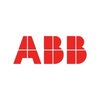Filter interviews by
Clear (1)
Schneider Electric Electrical Designer Interview Questions and Answers
Schneider Electric Electrical Designer Interview Experiences
2 interviews found
I applied via Walk-in and was interviewed in Nov 2024. There were 5 interview rounds.
Just basic electrical questions
Random general topics
(2 Questions)
- Q1. Types of induction motors
- Ans.
Types of induction motors include single-phase, three-phase, squirrel cage, and wound rotor motors.
Single-phase induction motors are commonly used in household appliances.
Three-phase induction motors are widely used in industrial applications.
Squirrel cage motors have a simple and rugged construction.
Wound rotor motors allow for external resistance to be added for speed control.
- Q2. Difference between ups snd inverter
- Ans.
UPS provides instant backup power during outages, while inverter converts DC power to AC power.
UPS stands for Uninterruptible Power Supply and provides instant backup power during outages.
Inverter converts DC power from batteries or solar panels to AC power for household appliances.
UPS typically has a battery backup to provide continuous power, while inverters rely on external power sources.
UPS is commonly used for cri...
(2 Questions)
- Q1. What makes you fit
- Ans.
My experience in electrical design, attention to detail, and ability to problem-solve make me a great fit for this role.
Extensive experience in electrical design projects
Strong attention to detail in creating accurate and efficient designs
Proven ability to problem-solve and troubleshoot issues
Familiarity with industry standards and regulations
Excellent communication skills to collaborate with team members and clients
- Q2. How IEEE will help our organisation
- Ans.
IEEE can help our organization by providing access to industry standards, networking opportunities, and cutting-edge research.
Access to industry standards for electrical design practices
Networking opportunities with other professionals in the field
Access to cutting-edge research and developments in electrical engineering
Opportunities for professional development and continuing education
Access to conferences and events
(2 Questions)
- Q1. Can you relocate here
- Ans.
Yes, I am open to relocating for the right opportunity.
I am willing to relocate for the right job opportunity
I have experience relocating for previous jobs
I am open to exploring new locations and experiences
- Q2. Can you work extra hours
- Ans.
Yes, I am willing to work extra hours when needed to meet project deadlines or address urgent issues.
I am flexible with my schedule and can adjust to accommodate extra hours
I understand the importance of meeting project deadlines and am willing to put in the extra effort
I have previous experience working extra hours when necessary, such as during crunch times or emergencies
Interview Preparation Tips
- Basic electrical
- Generation to Distribution
I applied via Walk-in and was interviewed in Jun 2024. There were 5 interview rounds.
30 questions technical in particular field like EEE or MECH
General topics like Work life balance in corporate world
(1 Question)
- Q1. Technical questions and if you have an experience that might be a chance to ask about that as well.
(1 Question)
- Q1. Projects in Btech final year and previous company experience ( if you have any )
- Ans.
I worked on designing a solar power system for a residential building in my final year project and designed electrical layouts for commercial buildings in my previous company.
Designed a solar power system for a residential building in Btech final year project
Created electrical layouts for commercial buildings in previous company
Utilized AutoCAD and Revit software for design work
(1 Question)
- Q1. General things like education and projects
Interview Preparation Tips
Electrical Designer Jobs at Schneider Electric
Interview questions from similar companies

Senior Engineer Interview Questions & Answers
Honeywell Automationposted on 19 Aug 2015
Interview Questionnaire
5 Questions
- Q1. Questions about flight mechanics and dynamics and controls
- Q2. Questions about mechanical engineering
- Q3. Questions on the thesis one has worked on and various projects and internships
- Q4. Questions based on practical situations
- Q5. Questions on basics of material, fundamentals of continuum mechanics, thermal science, parts of engine structure, etc
Interview Preparation Tips
Experience: I was guided by placement office quite appreciably for preparation of resume. First by one to one interaction and second by suggesting to talk to the seniors who are either injob or are hereafter the job. As it is always suggested about resume that, it reflects you in brief, you have to get it as good as you can. I followed the guidelines, made the first draft, got it corrected from some of my friends who are working in industries and got feedbacks from students who have experience from industries.
Round: APTITUDE TEST
Experience: It was intimated as aptitude but it included Verbal, Quants and basics of programmingand data structures & algorithm.
Round: Technical Interview
Experience: I went through two technical rounds and both of these included questions starting from the very basics of materials to the continuum mechanics’ fundamentals and applications. In the first round I was asked about flight mechanics & dynamics and controls’ by giving several conditions of practical importance, some part of engine structures and thermal science, my earlier projects and questions on that, some questions from the internship’s work and M.Tech thesis work. Very fundamental as well as complex questions were asked while explaining about the projects and thesis work. For the second round, I was sent to the panel interviewing for mechanical students and there I was asked questions from various subjects as well as for various conditions given on spot. Including both the technical interviews, I was asked questions from around 9-10 subjects of mechanical engineering. Apart from the questions from the course work, half of the interview was focused on the projects that I did earlier. I was asked to explain about the projects and give good insights of my contributions in that and accordingly I was asked questions from that as well. Later part of the technical round was focused for my thesis work. They started asking about the motivation behind the topic of the thesis and the technical platform set so far for the same. Concluding questions were from the company’s work and how I would be able to relate my expertise and thesis work for their benefit.. In the morning, Honeywell started it’s processing at around 6.30 am and I went for the first technical round at around 7 am. After some basic questions from the resume I was asked about the flight mech & controls. After sometimes the interviewer told me about his background, which was avionics and then he started from that. It must have gone over around 45 minutes. Second round of Honeywell was gruelling and I felt little uncomfortable at some points.
Round: HR Interview
Experience: HR round was more or less usual. Description about me and weaknesses in professional life were asked. The tricky one was one particular question about joining Honeywell and at the end of my answer, I was asked to compare Honeywell and the stalwarts of aerospace industry on my answer’s ground.
General Tips: Since I was looking only for the core aerospace companies, I was not looking very much about the aptitude and GD (specially, GD was not required). I was focusing about the technical side of the preparation, coursework, projects that I have done earlier and thesis work. I used the material provided by SPO for preparing the aptitude test solved some CAT papers and some online resources were useful. Further, I referred some core course works, specifically, thermal, fluid, aerodynamics, propulsion, structures & materials, materials & metallurgy and flight mechanics & dynamics for technical interviews.
Revise the course works, some part of the projects, be focused for profiles and prepare accordingly. Prior knowledge about companies work and the profile helps a lot. Sound knowledge of thesis work, approach and the applications, motivation behind the topic and the work completed till the placement season starts should clearly be checked. If you are not good at programming and DS & algo then revise the basics of these(helps for aptitude). Be mentally prepared for multiple rounds of technical interviews. Shape yourself according to the profile and surf through the company’s site beforehand. Get some suggestions and feedback from seniors(specifically, M.tech students should talk to seniors, fellow students and labmates who have been in industries) for technical interviews. Focus on your approach towards the problem for the worst case. During technical interview, don’t try to brag about the topic that you are not sure about. They sometimes want to test your approach and attitude for the problem given to you (which will be out of your comfort zone) rather than the accuracy of the answer. Since verbal was also the part of aptitude, don’t forget to look that during your preparation. Final Tips : Don’t lose hope and be focused for the profile that you are interested in and narrow down the companies accordingly. It’s all your attitude, past experience (both academics and professional) and preparation for the placements that will help you to nail it. 1st, 2nd or any other day or any other company (as long asthe profile matches with your interest) don’t matter much. At the end of the day, getting in the core-profile is what matters most (if you are interested incore alone) and if it is your preferred company then it’s a boon. Have faith in yourself and believe in the next option if you don’t get the first one.
College Name: IIT KANPUR
Motivation: Other companies that I was shortlisted for : GE, Rolls-Royce, Airbus. Analysis of available options (based on profile, growth, compensation, BrandName, etc) :As for the first day, GE didn’t seem inclined in taking Aerospace Engineering students and I was not looking for Rolls-Royce very interestingly. I was mainly focusing on Honeywell, Eaton and Airbus and was shortlisted to interview with these three. Because of Honeywell’s versatility and the involvement in R&D(as I got the feedback from people working in there), I was focusing mainly on Honeywell. And it was very much favourable from compensation point of view as well. Finally I was selected in both Honeywell and Eaton, and chose Honeywell.

Interview Questionnaire
5 Questions
- Q1. Questions on Fluid Mechanics, Thermodynamics, Turbo-machinery etc
- Q2. Why would you like to join the company ?
- Ans.
I am excited to join the company because of its reputation for innovation and commitment to excellence.
I am impressed by the company's track record of developing cutting-edge technology.
I am drawn to the company's culture of collaboration and teamwork.
I am excited about the opportunity to work with a talented and experienced team of engineers.
I believe that the company's focus on quality and customer satisfaction align...
- Q3. Where do you see yourself 10 years afterwards ?
- Ans.
In 10 years, I see myself as a highly experienced engineer leading a team of talented individuals towards innovative solutions.
Leading a team of engineers towards successful project completion
Continuing to learn and stay up-to-date with new technologies
Mentoring and guiding junior engineers
Contributing to the growth and success of the company
Exploring opportunities for professional development and growth
- Q4. Failures and successes during your careeer
- Ans.
I have had both failures and successes in my career as a Senior Engineer.
One of my biggest successes was leading a team that developed a new software system that increased efficiency by 50%.
I also had a failure when I underestimated the complexity of a project and it ended up being delayed by several months.
Another success was implementing a new process that reduced errors by 75%.
I learned from a failure when I didn't ...
- Q5. Questions on resume
Interview Preparation Tips
Experience: The test included General quantitative and logical reasoning, verbal reasoning, questions on basic topics of Mechanical Engineering like Thermodynamics, Mechanics of Solids, Energy Systems, Manufacturing etc.
Round: Technical Interview
Experience: Advanced questions on the topic of your interest specifically related to Aerospace and Mechanical Engineering like Fluid Mechanics, Thermodynamics, Turbo-machinery etc, questions like what do you know about the company.
General Tips: Always follow your interest while choosing a suitable job. If you are not sure about your interest, keep options open and try to get information on all those options and select accordingly. Never run after money only. One must prioritize his/her interests first, then the kind of work in the company and then the package.
Prepare for the technical profiles by studying core subjects which interests you the most, but a person needs to have basic knowledge of other topics related to your department also.
Apply for the company only after gaining sufficient knowledge about it. Identify your interest and what kind of work you like, then apply to the company which suits your style of working and is apt for you to pursue your interests. One must not apply to all the companies just because everyone is applying. One must judge whether he/she is capable for that job or not and then decide in which companies to apply.
Try to be confident with your answers and give genuine replies in HR interviews. One must not give vague answers and change views as this would clearly give the indication that you are not able to give clear answers or you are making them up.
College Name: IIT Kanpur

Interview Questionnaire
2 Questions
- Q1. Description about me
- Q2. Weakness in professional life
- Ans.
My weakness is sometimes taking on too much work and struggling to delegate tasks effectively.
Difficulty delegating tasks
Tendency to take on too much work
Working on improving time management skills
Interview Preparation Tips
Experience: They intimated as aptitude but it included Verbal, Quants and basics of programming and data structures & algorithm.
Round: Technical interview round 1
Experience: In this round I was asked about flight mechanics & dynamics and controls’ by giving several conditions of practical importance, some part of engine structures and thermal science, my earlier projects and questions on that, some questions from the internship’s work and M.Tech thesis work. Very fundamental as well as complex questions were asked while explaining about the projects and thesis work.
Round: technical interview round 2
Experience: I was sent to the panel interviewing for mechanical students and there I was asked questions from various subjects as well as for various conditions given on spot. Including both the technical interviews, I was asked questions from around 9-10 subjects of mechanical engineering. Apart from the questions from the course work, half of the interview was focused on the projects that I did earlier. I was asked to explain about the projects and give good insights of my contributions in that and accordingly I was asked questions from that as well. Later part of the technical round was focused for my thesis work. They started asking about the motivation behind the topic of the thesis and the technical platform set so far for the same. Concluding questions were from the company’s work and how I would be able to relate my expertise and thesis work for their benefit.
Round: HR Interview
Experience: HR round was more or less usual. Description about me and weaknesses in professional life were asked. The tricky one was one particular question about joining Honeywell and at the end of my answer, I was asked to compare Honeywell and the stalwarts of aerospace industry on my answer’s ground.
General Tips: Revise the course works, some part of the projects, be focused for profiles and prepare accordingly. Prior knowledge about companies work and the profile helps a lot. Sound knowledge of thesis work, approach and the applications, motivation behind the topic and the work completed till the placement season starts should clearly be checked. If you are not good at programming and DS & algo then revise the basics of these (helps for aptitude). Be mentally prepared for multiple rounds of technical interviews. Shape yourself according to the profile and surf through the company’s site beforehand.
Get some suggestions and feedback from seniors (specifically, M.tech students should talk to seniors, fellow students and lab mates who have been in industries) for technical interviews. Focus on your approach towards the problem for the worst case.
During technical interview, don’t try to brag about the topic that you are not sure about. They sometimes want to test your approach and attitude for the problem given to you (which will be out of your comfort zone) rather than the accuracy of the answer. Since verbal was also the part of aptitude, don’t forget to look that during your preparation.
College Name: IIT Kanpur

Senior Engineer Interview Questions & Answers
Honeywell Automationposted on 22 Feb 2015
Interview Questionnaire
2 Questions
- Q1. Standard HR questions
- Q2. Questions based on my POR's and extra curricular activities
Interview Preparation Tips
Experience: Good projects and internships helped me to get through this round
Round: Test
Duration: 60 minutes
Round: Technical Interview
Experience: Questions related to signal processing (included image signal processing as well), control and communications. Also there were few technical questions based on the internships and the projects done. This interview lasted for about 30 mins.
Round: HR Interview
Experience: 45 mins of HR round. All the standard HR questions were asked and questions were based on each and every point that you have put up in the resume
College Name: IIT MADRAS

I applied via Recruitment Consultant and was interviewed in Mar 2021. There were 4 interview rounds.
Interview Questionnaire
3 Questions
- Q1. What is your role in quality control department.
- Q2. Describe one of your project that you did sololy/with extra efforts.
- Q3. What is your team size. And at which layer lying.
Interview Preparation Tips

I applied via Recruitment Consulltant and was interviewed in May 2021. There were 5 interview rounds.
Interview Questionnaire
5 Questions
- Q1. Salary discussion
- Q2. Type of communication protocols , DCS PLC SCADA system
- Ans.
DCS, PLC and SCADA systems use various communication protocols such as Modbus, Profibus, Ethernet/IP, etc.
DCS systems use protocols like Modbus, Profibus, HART, Foundation Fieldbus, etc.
PLC systems use protocols like Modbus, Ethernet/IP, Profinet, DeviceNet, etc.
SCADA systems use protocols like Modbus, DNP3, OPC, IEC 60870-5, etc.
Each protocol has its own advantages and disadvantages, and the choice of protocol depends...
- Q3. Basic electrical
- Q4. Type of safety action
- Ans.
Safety action refers to any action taken to prevent or mitigate potential hazards or risks.
Safety actions can include implementing safety protocols and procedures, providing safety equipment and training, conducting safety audits and inspections, and addressing safety concerns raised by employees or customers.
Examples of safety actions include installing guardrails on a construction site, providing personal protective ...
- Q5. Basic questions

I was interviewed before May 2021.
(1 Question)
- Q1. Opps and asp.net questions , dependency injection
(1 Question)
- Q1. Personality and character checking are you fit for position
- Ans.
Yes
I have the necessary personality traits and character qualities for the Senior Engineer position.
I am highly motivated, detail-oriented, and have excellent problem-solving skills.
I am a team player and have strong communication and leadership abilities.
I am adaptable and can handle pressure and tight deadlines effectively.
I have a track record of successfully delivering complex projects and meeting objectives.
I cont...
(1 Question)
- Q1. Salary discussion and etc
Interview Preparation Tips

Senior Engineer Interview Questions & Answers
Rockwell Automationposted on 23 Dec 2024
I applied via Company Website
Ghkmkjgvnk jhfy hkoojg bhkkmk
(2 Questions)
- Q1. What are your reasons for wanting to change your company?
- Ans.
Seeking new challenges and opportunities for growth.
Desire for new challenges and learning opportunities
Looking for career advancement and growth potential
Seeking a more supportive and collaborative work environment
- Q2. What is your expected salary?
- Ans.
My expected salary is based on my experience, skills, and the market rate for Senior Engineers.
Consider my years of experience in the industry
Take into account my specialized skills and certifications
Research the current market rate for Senior Engineers in this location
Negotiate based on the overall compensation package offered
Interview Preparation Tips
Schneider Electric Interview FAQs
Recently Viewed
Tell us how to improve this page.
Schneider Electric Interviews By Designations
- Schneider Electric Deputy Manager Interview Questions
- Schneider Electric Electrical GET Interview Questions
- Schneider Electric Software Engineer Interview Questions
- Schneider Electric Intern Interview Questions
- Schneider Electric Senior Engineer Interview Questions
- Schneider Electric Graduate Engineer Trainee (Get) Interview Questions
- Schneider Electric Production Engineer Interview Questions
- Schneider Electric R&D Engineer Interview Questions
- Show more
Interview Questions for Popular Designations
- Electrical Design Engineer Interview Questions
- Electrical Engineer Interview Questions
- Electrical Technician Interview Questions
- Electrical Supervisor Interview Questions
- Electrical Maintenance Engineer Interview Questions
- Electrical GET Interview Questions
- Diploma Electrical Engineer Interview Questions
- Senior Electrical Engineer Interview Questions
- Show more
Schneider Electric Electrical Designer Interview Process
based on 3 interviews
Interview experience
Interview Questions from Similar Companies
Fast track your campus placements
Schneider Electric Electrical Designer Reviews and Ratings
based on 1 review
Rating in categories
|
Deputy Manager
1.2k
salaries
| ₹0 L/yr - ₹0 L/yr |
|
Senior Manager
684
salaries
| ₹0 L/yr - ₹0 L/yr |
|
Manager
670
salaries
| ₹0 L/yr - ₹0 L/yr |
|
Assistant Manager
304
salaries
| ₹0 L/yr - ₹0 L/yr |
|
Deputy General Manager
281
salaries
| ₹0 L/yr - ₹0 L/yr |

Siemens

ABB

Honeywell Automation

Emerson Electric Co.
- Home >
- Interviews >
- Schneider Electric Interview Questions >
- Schneider Electric Electrical Designer Interview Questions



















